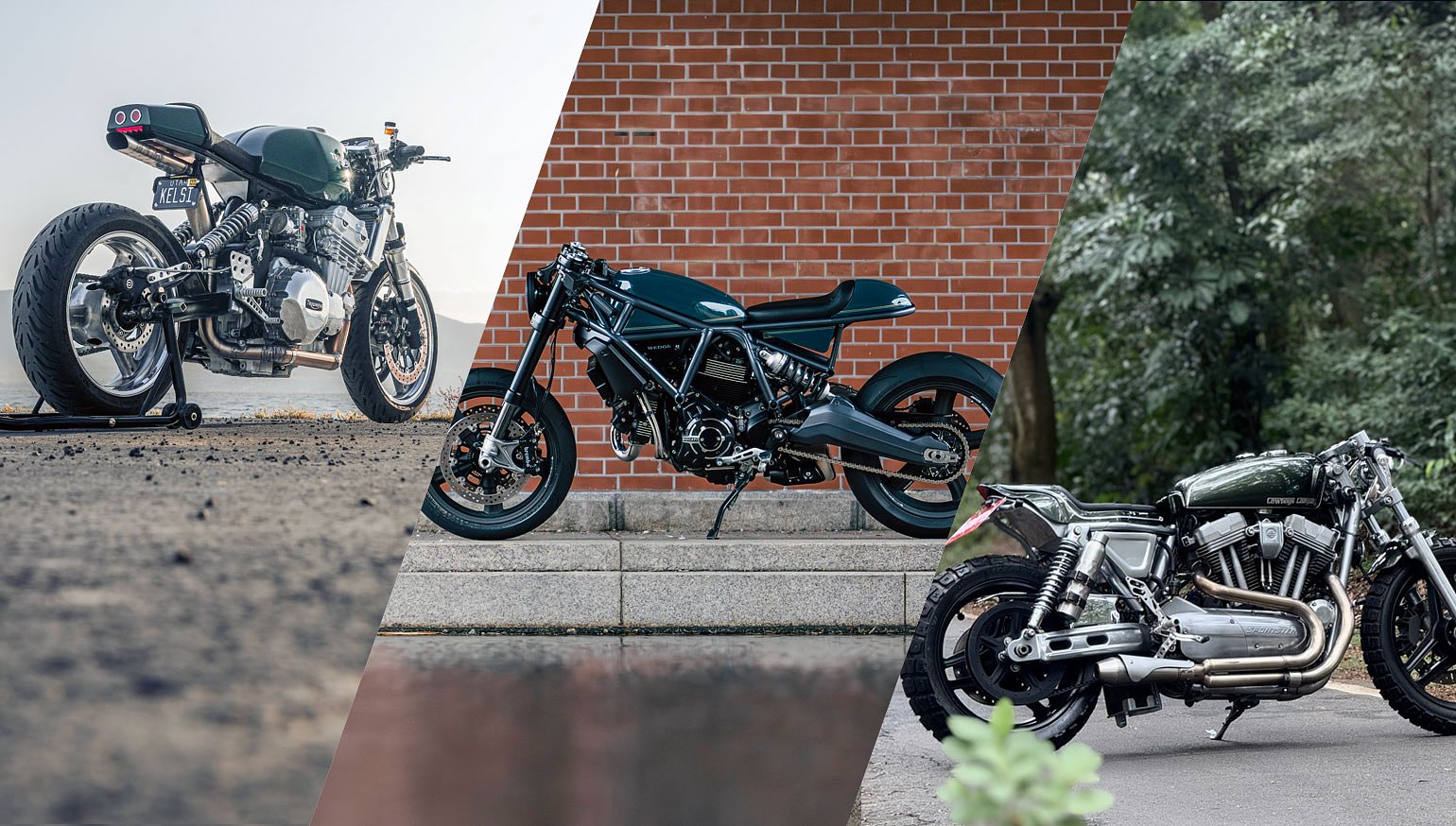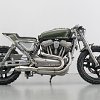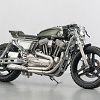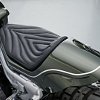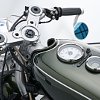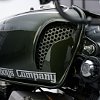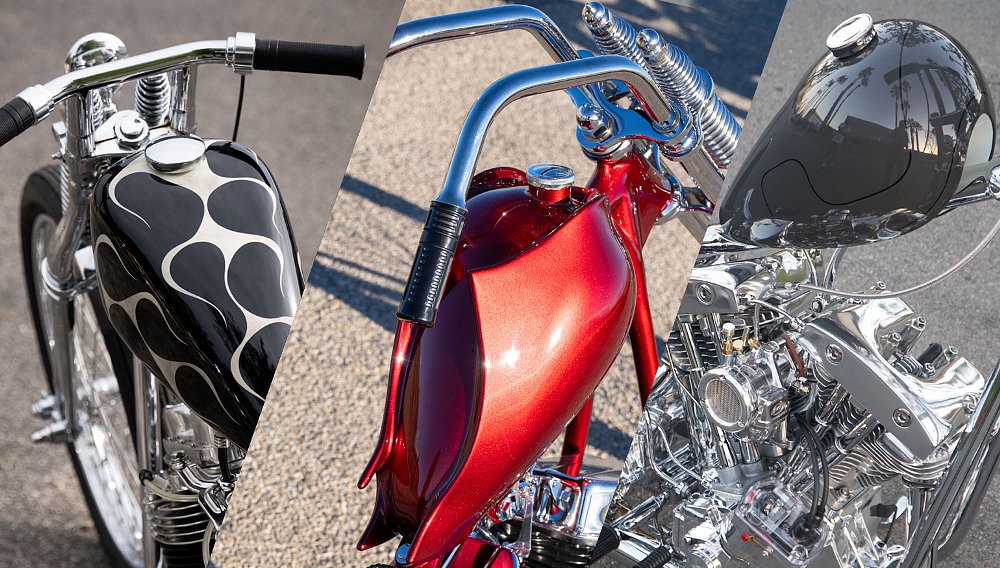This month, we've got an all-green, all-café racer lineup starting with an aggressive XR1200 Sportster from Taipei. In second position is an old-meets-new Triumph from a backyard builder in Utah. Lastly, Japan's Wedge Motorcycle shows off a Scrambler café racer that puts Ducati's effort at the iconic British style to shame.

Cowboys Chopper Harley-Davidson XR1200 Sportster
Taiwan's capital of Taipei is home to roughly 400 motorcycles per square kilometer, most of which are scooters. That equates to about 1.4 million motorcycles for a population of only 2.5 million. The abundance of scooters is due to a combination of cost, convenience, and the layout of the city's roads, but in recent years, larger capacity motorcycles have begun to find their place.
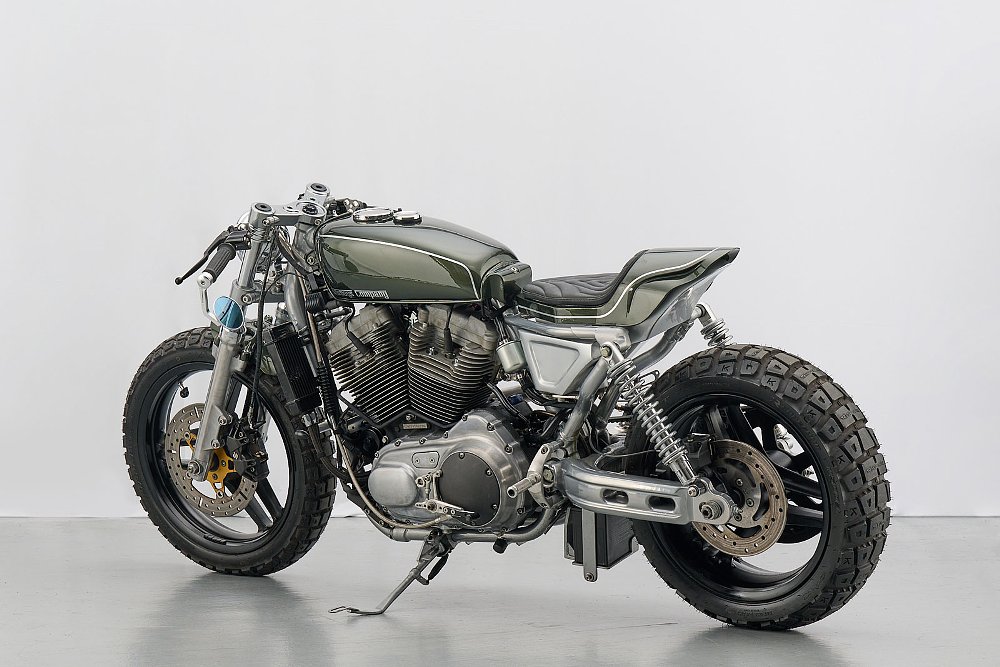
Alex Gao's workshop, Cowboys Chopper, is located on the outskirts of Taipei. Since 2013, he and his team have been fulfilling their customers' custom motorcycle dreams. Despite the workshop's name, Cowboys Chopper is happy to build any style of motorcycle. Case in point, this Harley-Davidson-based café racer.
This bike, based on the sportiest of Sportsters, a Harley XR1200, was built for the owner of several hairdressing salons in Taipei who wanted an "aggressive yet elegant Harley," says Alex. Built to make the commute between his salons more enjoyable, Cowboys treated the XR to a comprehensive café racer overhaul.

To transform the flat-tracker-styled XR1200 into a café racer, the Cowboys team has revised everything from the bike's stance to its bodywork. Starting with the suspension, they've swapped out the upside-down front end with a shorter, more classically styled telescopic fork from a Forty-Eight Sportster. For a more aggressive, café-style riding position, they've fitted the fork with clip-on handlebars and added rear-set footpegs.

When it came to the bodywork, the Cowboys team pulled out all the stops. The handmade British racing green fuel tank sits low and level on the chassis, establishing an archetypal café racer bone line. But the tank doesn't actually contain any fuel. It instead houses the bike's relocated electronics and acts as a host for the gauges, keeping the handlebar area clutter-free. Similarly, the custom rear cowl is a cover, too. Actuated by an electronically controlled hinge, the cowl raises to allow access to the fuel and oil tank fillers. The fuel tank itself is made up of the rear section of the tail and the space behind the left-hand side cover, while the oil occupies the space to the right.
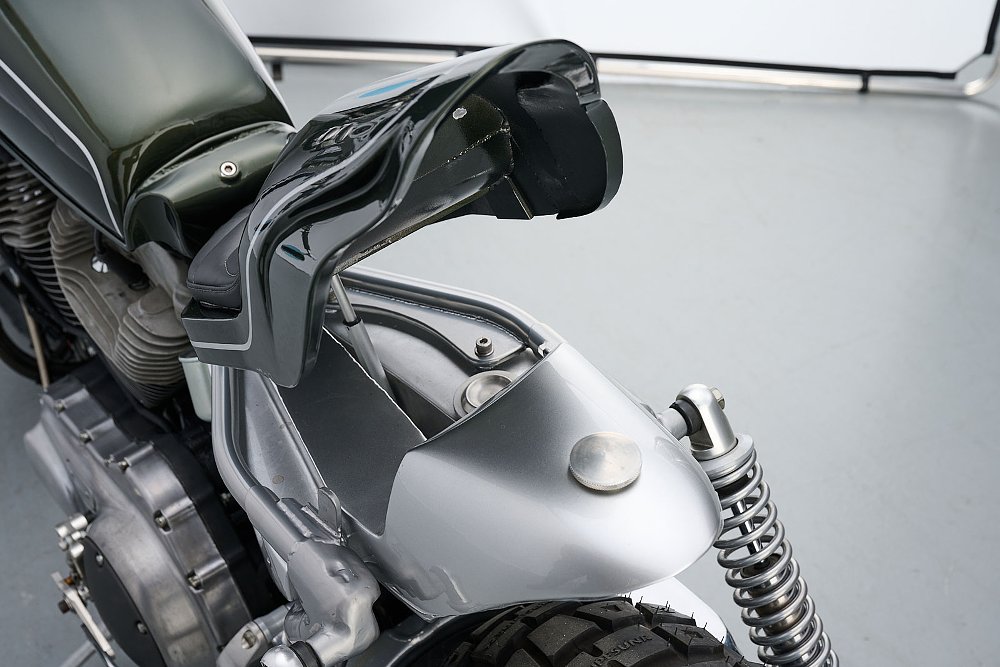
Additional handmade touches to the XR include a short front fender, belt cover, and a sleek two-into-one exhaust system. Taiwan aftermarket brand MSmoto provided the new switchgear, and the 5.5-inch headlight is locally made, too. The tire choice here is a form-over-function decision, but they tick the aggressive request in the client brief. As for elegance, tasteful touches of brushed aluminum and silver paint make this hairdresser's Harley a cut above the rest.
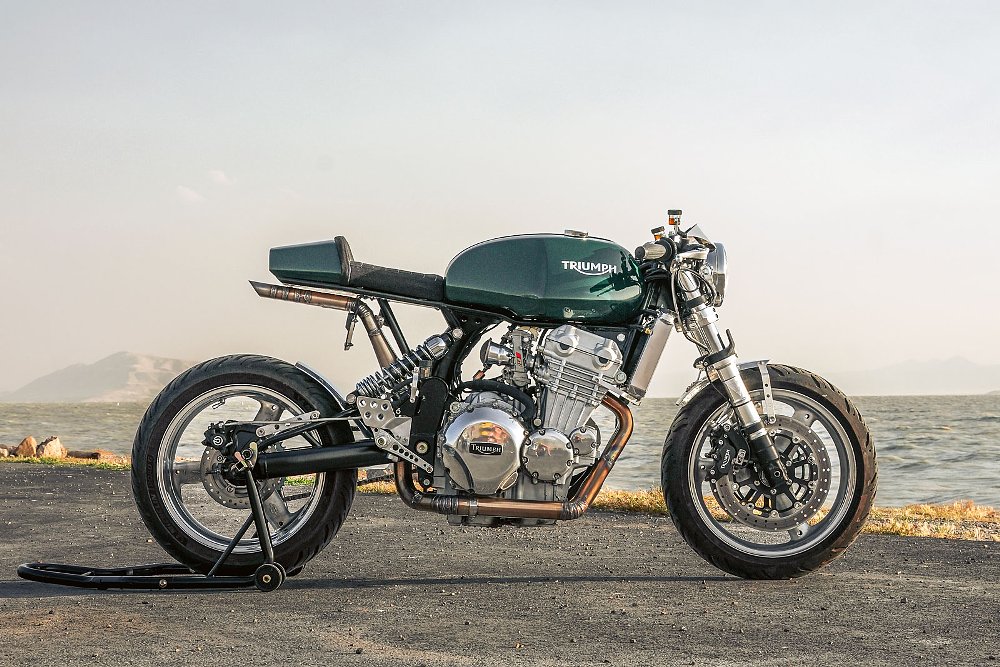
Dante D'Agostini's Triumph TR6R Sprint
Utahn Dante D'Agostini has been building custom vehicles for almost half his life. A software test engineer by day and bike builder by night, he has several impressive builds to his name. His work is highly creative in its design, often using parts from obscure sources or unlikely donors. One example is his 1976 Fiat Abarth tribute, which runs a modern turbocharged Mustang drivetrain. Similar to that car, his latest two-wheeled project merges old and new to create a one-of-a-kind motorcycle that has performance befitting of its new look.
The donor for this project, which was little more than a frame, came from a Triumph collector in Salt Lake City. Originally housing a 649 cc parallel twin, the frame belonged to a 1971 Triumph TR6R Tiger.
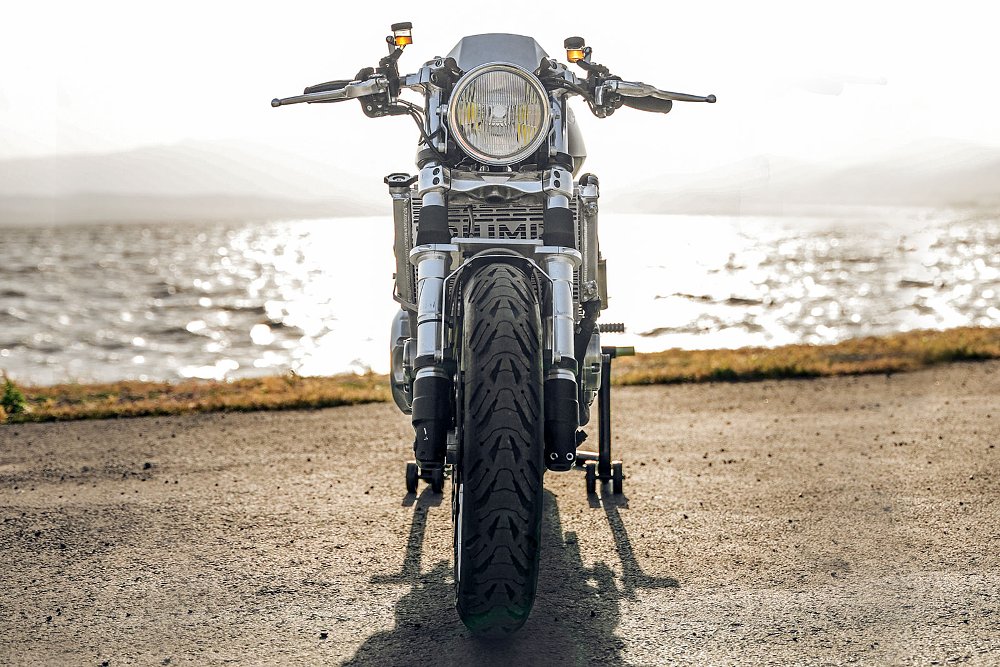
Dante's concept was to build a '70s-style café racer with a spattering of modern touches and timeless British racing green paint. Similar to café racers of that era, he decided to retrofit an engine into the Tiger frame that offered a significant performance improvement. The engine he went with was the 885 cc liquid-cooled inline-three from a 1996 Triumph Sprint 900.
"I rebuilt the engine and gearbox, with Triumph Super III high comp pistons, 'green' cams, all new bearings, piston rings, honed jugs, new clutch discs, and I lapped the valves and added new valve seals," he explains. Feeding the hopped-up triple are Keihin FCR 39 carbs fitted with 55 mm velocity stacks, and to fit the engine into the frame, he fabricated and welded in custom mounts.
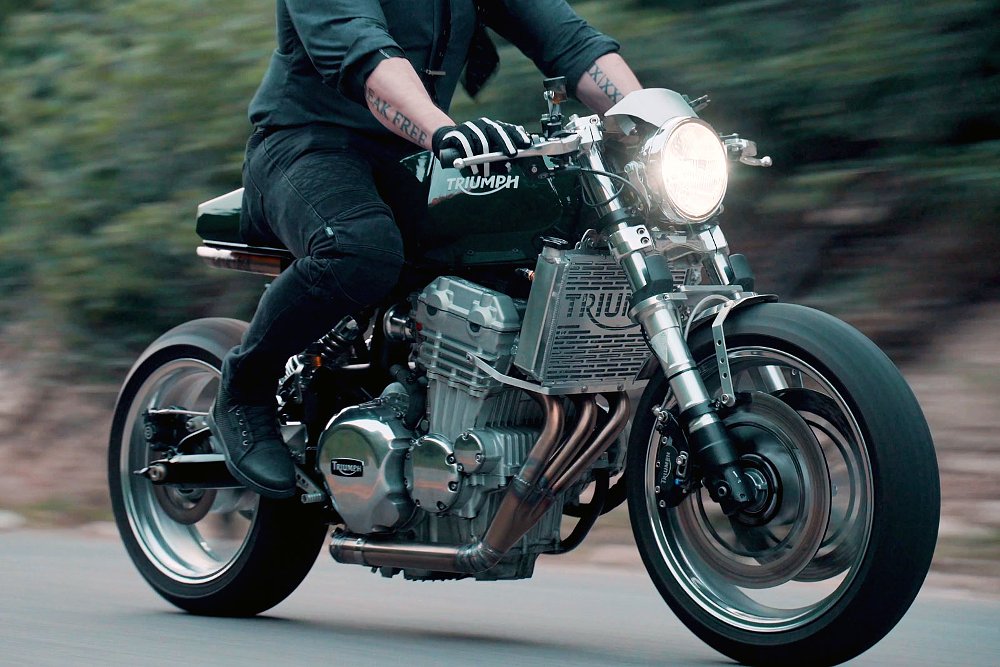
Dante also made a few changes to the frame itself, adding a custom subframe and mounts to support a Mishimoto Kawasaki KFX quad bike radiator. Perched on the frame is an original European market '71 Triumph fuel tank. Dante modified the tank to sit on the frame by adding new front and rear mounts and installing petcocks out of sight to keep things looking clean. The rear cowl and seat pan are one-off parts that he shaped using an English wheel.
Dante's approach with the suspension followed suit with the fitment of 2006 955i Daytona fork, wheels, and front brakes. Upgraded internals improve their performance even further, and a Brembo from a 2023 Triumph Speed Triple in the rear evens out the brakes. The rear suspension is yet another Frankenstein creation using the swingarm from a Kawasaki Vulcan. Dante modified it to accept dual Progressive Suspension 444 series shocks with spring rates he calculated himself. This wasn't purely a performance-focused decision, though. Originally, the Vulcan swingarm ran a monoshock and the hole in the swingarm gave him the opportunity to get creative with the exhaust.
"I built the exhaust from 304 stainless, with lots of pie cuts to get it tucked close to the engine and up through the swingarm," he explains. "The 'muffler' is a section of 304 stainless oval tubing with chambers I built into it."
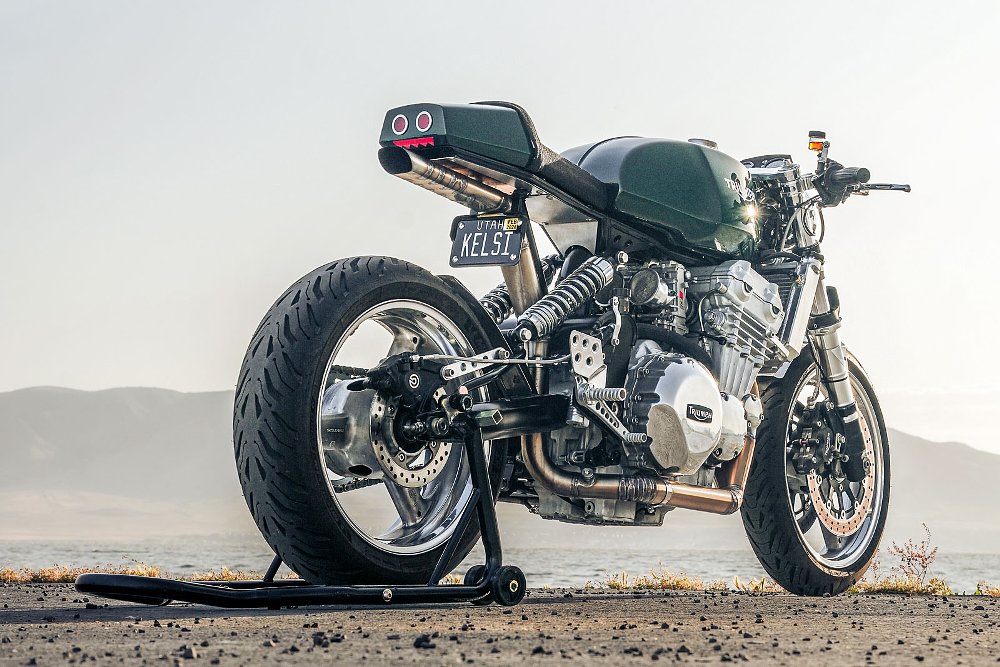
Dante also put together the dashboard, which houses some Koso gauges and LED warning lights. Both of the alloy fenders are bespoke, as is the headlight visor, wiring loom, and the mounts and linkages for the rear set footpegs. Topping it all off is the seat, which was lovingly upholstered by Dante's mother.
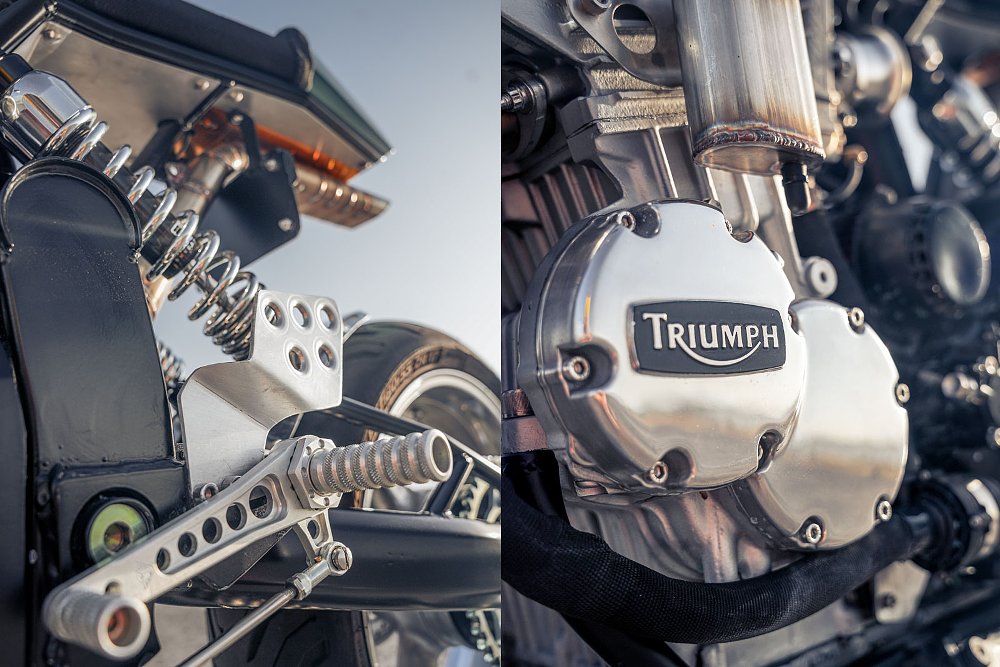
Additional aftermarket and retrofit components on this build include a lightweight lithium battery, Motion Pro throttle, Pacific Customs LED dune buggy tail lights, a custom laser-cut radiator guard by OshCut, rear sets from Joker Machine, a 1990s Suzuki GSX-R kickstand to accommodate the new foot controls, and purposeful Michelin Road 6 tires.
One of the most impressive feats of this build is that Dante completed everything himself in his small home garage, save for his Mom's sewing. That's the fabrication, engine work and tuning, suspension mods, and even the painting and polishing. Dante also proudly admits that his one-of-a-kind Triumph is very comfortable to ride. So comfortable, in fact, that it's his chosen transport to work at least three times a week.
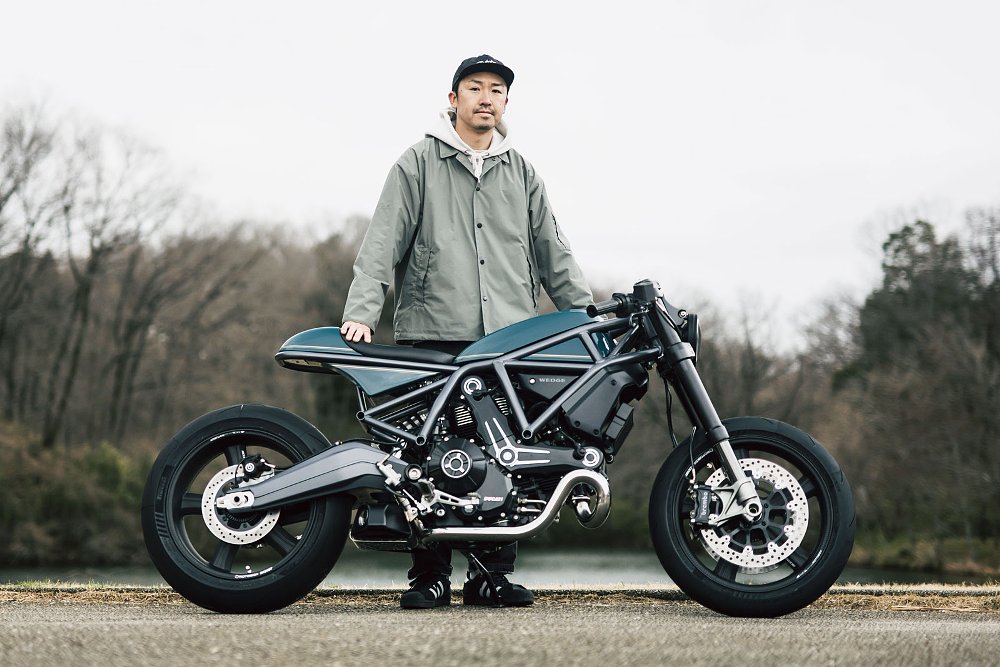
Wedge Ducati Scrambler 1100
Since its inception, Ducati has released the hugely successful Scrambler in a raft of different variations. Most have been basic specification and styling exercises, but there have been a few more extreme models that offer customers a vastly different Ducati Scrambler experience. In 2017, they revealed what is perhaps the biggest oxymoron to hit the modern retro scene so far, the ambiguously named Scrambler Café Racer.
Like its name, the Scrambler Café Racer was a confusing mish-mash of styles that, in my humble opinion, missed the mark. But now, Takashi Nihira, the man behind Japan’s Wedge Motorcycles (Instagram), has created a Scrambler Café Racer that makes a lot more sense.
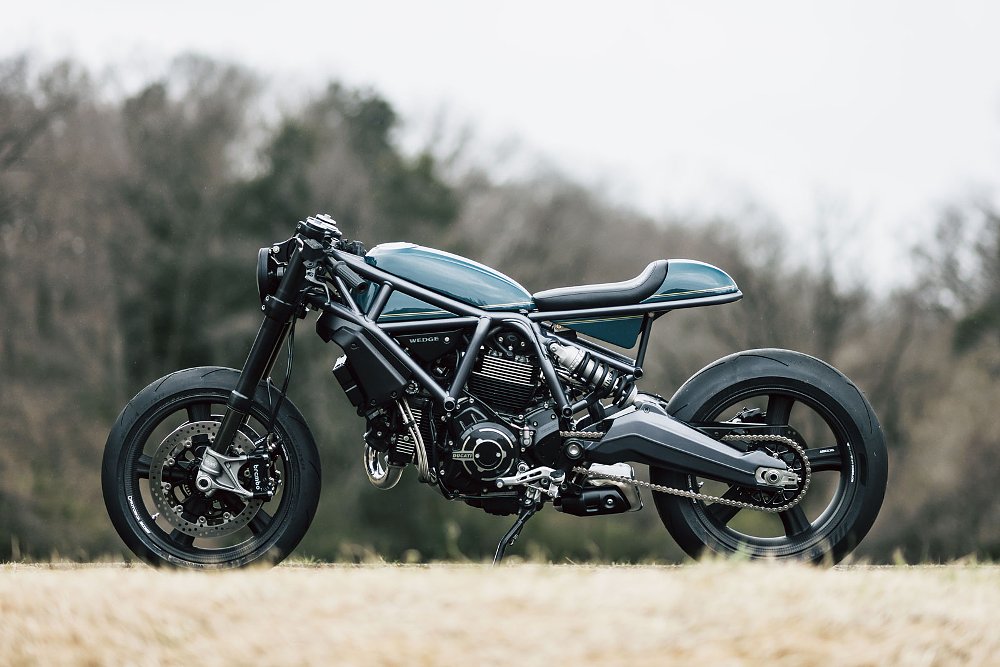
Interestingly, this project actually started as a client request for a Honda CB1100, but after hearing his customer out, Nihira-san had other ideas. Rather than modifying yet another Japanese motorcycle, he wanted to try something new, so he convinced his customer to go with a motorcycle less common in the Japanese custom scene. More specifically, a Ducati Scrambler 1100 Sport PRO.
On paper, the Scrambler 1100 has similar power and displacement to the CB1100, but it outdoes the Honda in handling thanks to suspension by Öhlins and brakes by Brembo. Add to that the Ducati's gorgeous trellis frame and striking L-twin engine, and it's easy to see why Takashi's customer agreed.
When conceptualizing a motorcycle build, Takashi takes a slightly different approach. "I always think about what kind of lifestyle the customer has," he says. "What kind of clothes they wear, what kind of cars they drive, and what they want to do with the custom bikes I build. I look at them, listen to them, and formulate an image of the custom bike I want to build for them."
After defining a client-based style palette, Takashi turned his attention to improving upon Ducati's design. "The trellis frame with the L-twin engine is very cool and I wanted to show it off. However, it is unbalanced to place a fuel tank on the twin-spar frame," he says. So his solution was to build a tank that sat within the frame structure, or, pardon the pun, was wedged into it.

Although it appears as though the frame is recessed into the new tank, it's not. In reality, the tank narrows to fit within the frame. The sections within the trellis structure are simply covers that create the illusion. To make up for any loss in fuel capacity, Takashi built a second fuel cell that sits in the space beneath the head tube where the airbox previously lived.
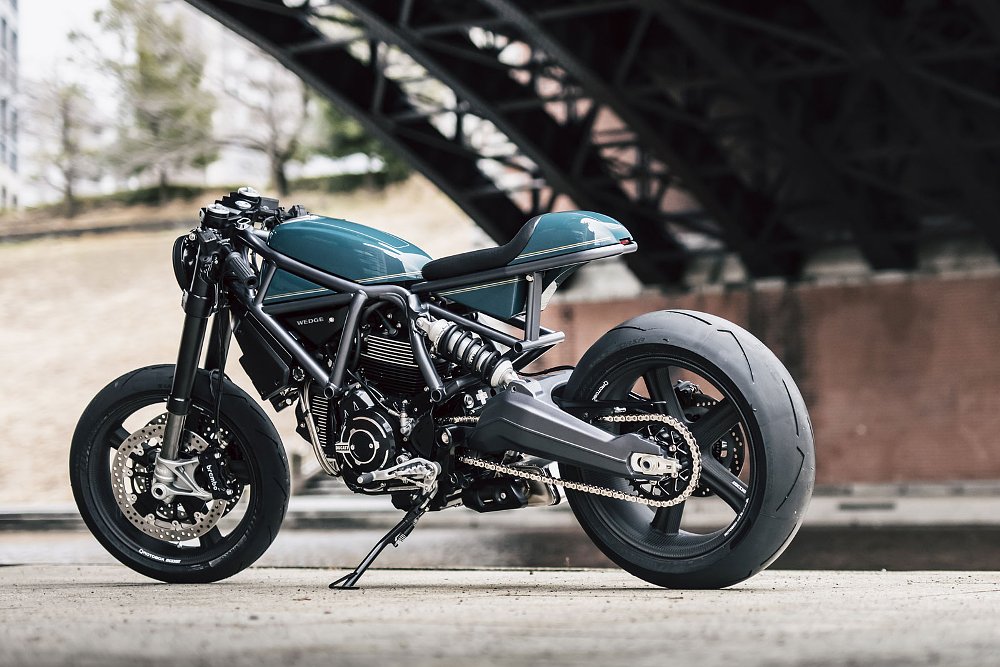
To apply his vision to the Scrambler's rear end, Takashi fabricated a new subframe. Designed to mimic the trellis structure of the rest of the frame, it achieves two goals. The first is to support the café racer style rear cowl and seat he’s built, and the second, to create visual harmony. Like any great designer, Takashi has an obsession with aesthetic balance, so he very carefully considers lines, symmetry, and visual hierarchy. As a result, his subframe creates a harmonious line from the front of the frame to the end of the swingarm. The really impressive thing, however, is that he's built it so that everything aligns once the rider is in the saddle.
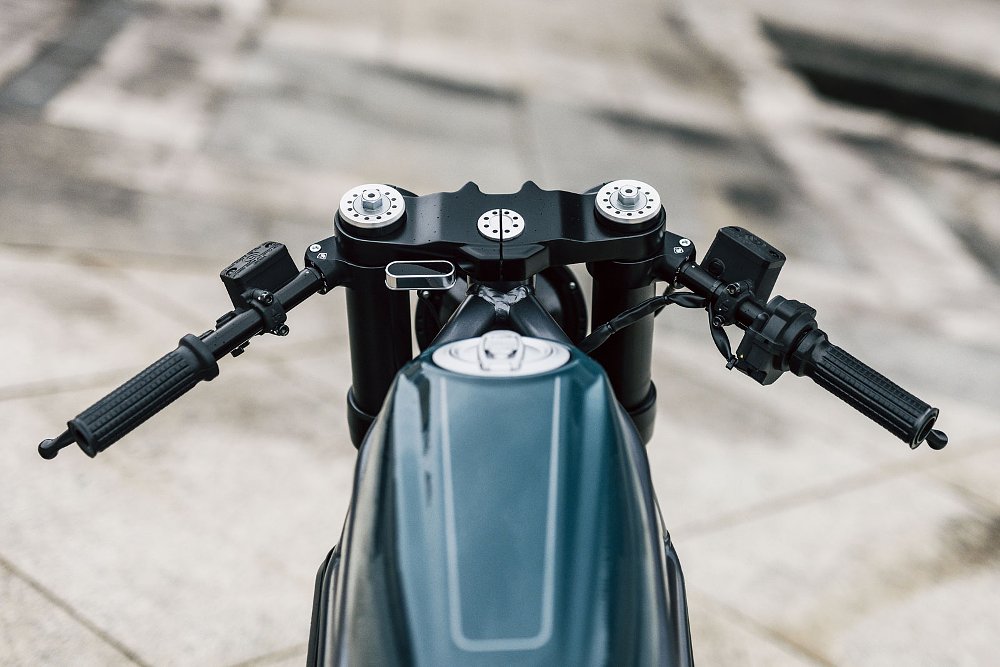
Another component of the bodywork integrated into the subframe is the asymmetrical housing for the relocated electronics. On one side, its shape matches the triangle of the subframe, while on the other, it is curved to match the radius of the rear wheel. This was done to complement other asymmetrical design elements on the bike, such as the rear suspension. Along with the new bodywork, Takashi fabricated a set of clip-on bars and a bespoke exhaust system sporting a Leo Vince box muffler.
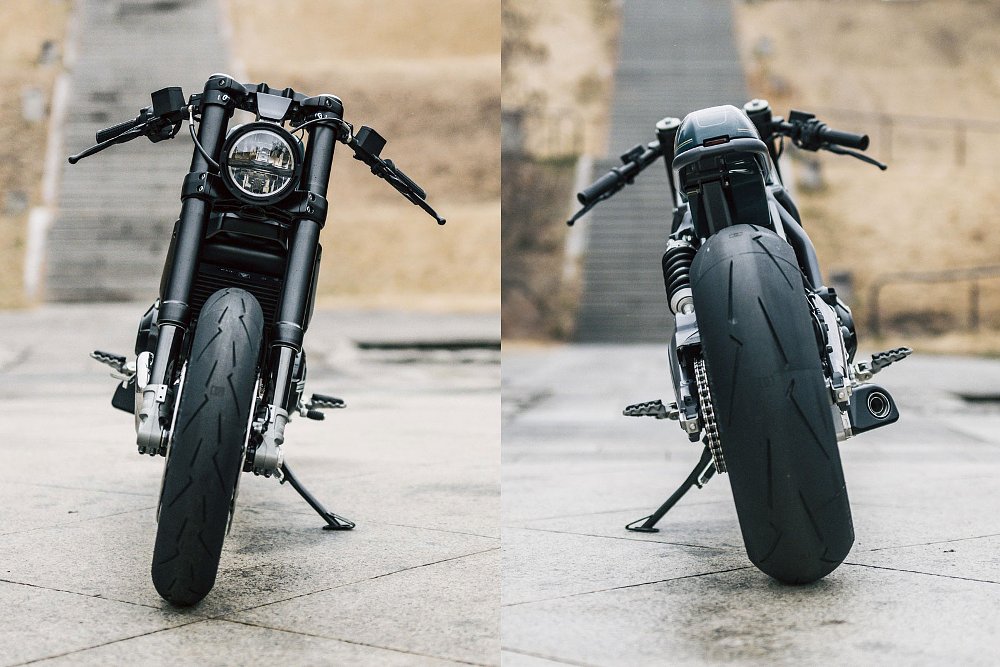
To complete the new look, much of this Scrambler's original running gear has been replaced by aftermarket alternatives. Topping the list are 17-inch carbon wheels by ROTOBOX. The new wheels greatly decrease unsprung mass, and in combination with Pirelli Diablo Supercorsa SP V4 tires, they offer significant handling improvements. The custom LED lighting arrangement comes courtesy of Highsider, and the tiny digital gauge is by Motogadget.
The result of Takashi's work here is nothing short of amazing. In this instance, I think it's fair to say the customer isn't always right, and I'm sure the bike's owner would humbly agree.

 Membership
Membership

